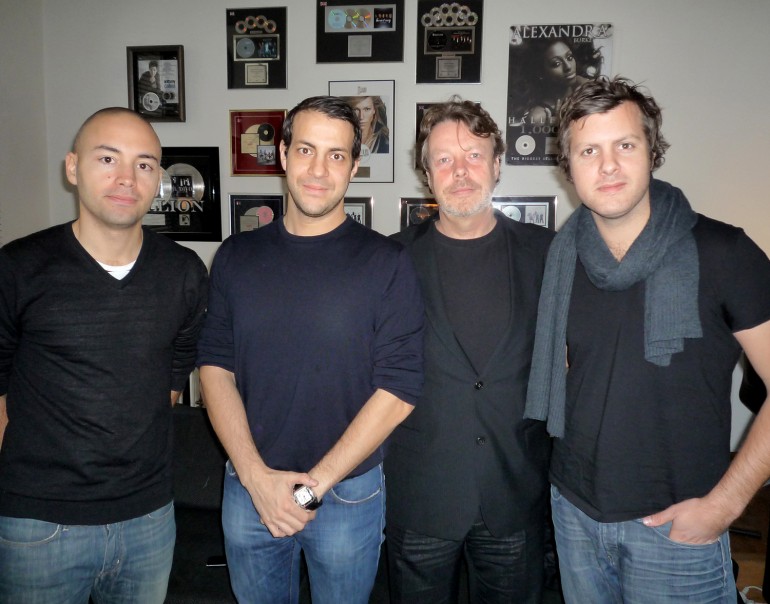The secret Universal ‘fake artists’ behind a bunch of Spotify’s most streamed tracks – revealed
Andreas Romdhane and Josef Seeland on the left with BMI staff
Spotify’s playlists have been found to feature hundreds of questionable artists, which have been found out to be just two fellas.
Last summer Music Business Worldwide made an interesting discovery about a number of artists in Spotify’s playlists with high streams and no history. Recently Spotify made a statement relating to ‘fake artists’ on their music streaming platform that caused MBW to restart their investigation.
A spokesperson for Spotify said recently: “We do not and have never created ‘fake’ artists and put them on Spotify playlists. Categorically untrue, full stop.” So what’s really going on with all these artists with major popularity in playlists who don’t seem to exist anywhere else?
MBW took their investigation further to collate a list of all the artists they could find that came under the ‘fake artist’ requirements. After getting a list of 50 names, and concluding that there are likely over 100 artists fitting this criteria, MBW made an even more interesting discovery with the help of their readers.
Searching ASCAP and BMI’s databases for ISRC’s related to the tracks they managed to find two music producers who seem to be responsible for a majority (if not all) of these ‘fake artists’. A song by artist ‘Deep Watch’ was credited as being written by Andreas Romdhane and Josef Svedlund. Then a track by ‘Piotr Miteska’ was found to have Romdhange/Svedlund credited, and then another track, then another.
All of the different ‘fake artists’ on Spotify’s playlists were credited under a bunch of different companies like DW Prod, PTRMTSK, The Inversions and so on. However if you look into it, Andreas Romdhane and Josef Svedlund are better known as duo Quiz & Larossi (Q&L Publishing) which is administered by Universal Music Publishing Group.
So what’s really going on here? Well it is still kind of ambiguous despite a bunch of breaking revelations. It is clear however that something is going on with ‘fake artists’ being placed on playlists and earning millions of streams based on… something. And now major label Universal may be involved (I highly doubt UMG let the duo produce secretly for Spotify without their involvement) even more questions are raised.
What is clear however is that Spotify’s playlists are filled with these artists and it would suggest they are using them to gain streams for themselves, diminishing the value of tracks from labels and independents. Oh and by the way, Andreas Romdhane and Josef Svedlund are currently working out of a studio in Stockholm, Sweden which just happens to be home to Spotify’s main base.
